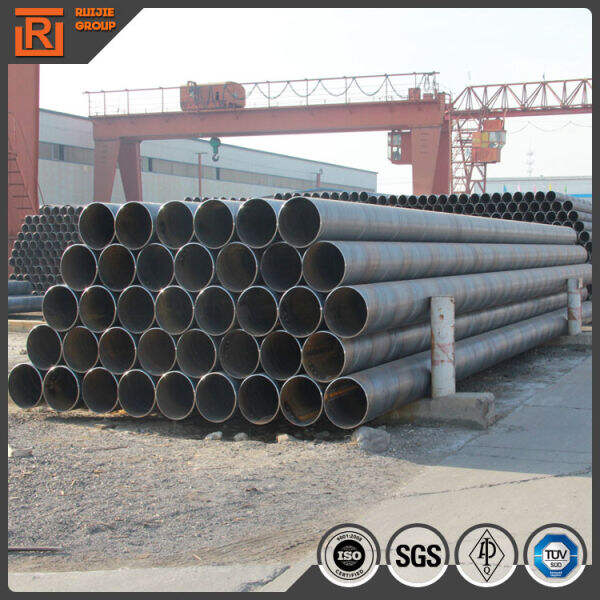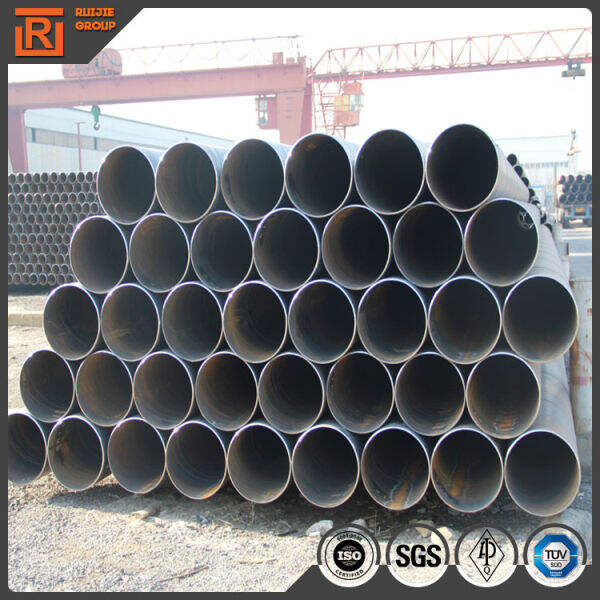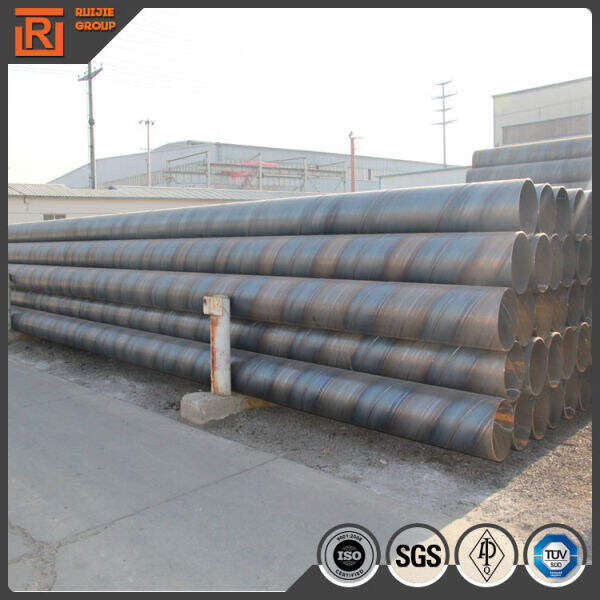סוג אחד של מוצרים מתכת שתפגש לו לעתים קרובות בשוק הם 菅 חלול ספירלי ז. זה נעשה באמצעות סוג של ברזל שמכיל פחות פחמן מאשר סוגי הפלדה האחרים. הם אמרו שזה היה חיוני להקטין את התכולה של הפחמן, מה שמצמצם את הזיהום לסביבה. היום, נלמד עוד על צינור פלדת פחמן ועל איך הוא יכול להיות מועיל לנו. גם נדון כיצד צינורות אלו מפחיתים פחמן ועוזרים לנו בדרך מסוימת, על בנייתם – שהם חזקים וגם עמידים; הסוגים השונים של צינורות פלדה עם תכולת פחמן נמוכה זמינים לשימושים שונים, ועוד על מה שהם יכולים לבנות כדי להיטיב עם כוכב הלכת שלנו.
יש הרבה יתרונות שמספקים צינורות פלדה בעלת כבידת פחמן נמוכה, מה שגורם להם להישאר אופציה פופולרית. היתרון הגדול ביותר הוא שהם הרבה יותר ידידותיים לסביבה מאשר כל סוג אחר של צינורות פלדה. הפלדה מיוצרת על ידי תהליך ייצור שפעמים רבות משמיט לאטמוספירה הרבה גזי רעל מסוכנים לכדור הארץ שלנו. עם זאת, אם אנו עובדים עם צינורות פלדה בעלת כבידת פחמן נמוכה, זה יכול לעזור לנו להפחית את התلوוה הזו. השוויון של צינורות פלדה בעלת כבידת פחמן נמוכה הוא יתרון נוסף קריטי. זה גורם להם להיות נגיש יותר זמינים טווח רחב של בונים ותעשיות מכיוון שהוא שומר על מחירים נמוכים ליישום.
תפקיד בענין שימור אנרגיה וירידה בהפקעת פחמן של צינורות פלדה בעלי פחמן נמוך. יש להם פחות פחמן מרוב הצינורות הפלדיים האחרים, ולכן בעת ייצורם מופק פחות דו-אוקסיד הפחמן לאטמוספירה. ייצור פלדה מוציא כמות משמעותית של דו-אוקסיד הפחמן לאטמוספירה, והוא לכן מקור אחד של גזים המפריעים לתהליך האקלים. על ידי שימוש ב צינור פלדה מרותך ספירלה צינורות אלו ניתן להפחית את פליטת CO2 מפעלי ייצור. זה בגלל ש צינור פח ERW קרבוני צינורות אלו צורכים פחות אנרגיה בעת עיבודם מאשר ייצור סוגי צינורות פלדה אחרים. צינורות פלדה בעלי פחמן נמוך הם גם רכילים, מה שמצמצם זיהום ומשמר משאבים.

הדבר המועיל ביותר בדוכן פלדה עם כמות נמוכה של פחמן הוא חייו הארוכים. הדוכנים האלה יכולים להחזיק בקלות כל תנאי מזג אוויר קשים כמו גשמים כבדים, שלג ורוחות מהירות גבוהות. הם מיוצרים עם כמות נמוכה של פחמן, ולכן הם מתעבים ומתאכלים לאט, מה שמאפשר להם להחזיק במשך שנים רבות לפני שהם זקוקים להחלפה. הבטון שנוצר קיים כבר 150 שנה, והאיכות ארוכה זו נראית במספר יישומים בנייה. מצד שני, דוכני פלדה עם כמות נמוכה של פחמן הם יותר קלים לשמור עליהם, ולכן הם בחירה ראשונה בין בנאים ומהנדסים עבור מספר פרויקטים שונים.

תubiים של פלדה בעלות כבידת פחמן נמוכה מגיעים בצורות רבות כדי לשרת טווח רחב של מטרות. תubiים של פלדה בעלות כבידת פחמן נמוכה בדרך כלל מיוצרים לשימוש בלחצים גבוהים, אחרים מיוצרים בעיקר לשימוש בלחצים נמוכים.ßerdem, התubiים מעוצבים בגודלים וצורות שונות כך שתוכל לקבל במהירות את המתאים לעבודה הספציפית. תubiים של פלדה בעלות כבידת פחמן נמוכה זמינים בצורה עיקר מהסוגים הבאים: ללא שasiswa, שמופרדים להלן לסוג "hot finished" או "cold drawn"; מחוברים (welded) ו- חיבור חשמלי בתדר גבוה בשיטה של סדימה אורך (LSAW). חלק מהם כוללים גם תubiים עם תכפיפה גבוהה בעלות ג'לקטרוד ג'לאיינז'.

אלה הם בעצם סוג של פלדה ביצועים גבוה לבניית מבנים ותקנים, כמו צינור נמוך בפחמן, שמשתמש בו יותר ויותר לפיתוח אינפראסטרקטורה מתמדת - תכנונים ידידותיים לסביבה שמנסים להיות יעילים במשאבים בכל שלב. מתחנות טיהור מים שמנעות מי חלול עד גשרים המחברים קהילות שונות ובנינים המגינים על אנשים; צינורות פלדה עם פחמן נמוך בשימוש בכל המקומות בגלל עמידותם, חוזקם וגם תכונותlucent שלהם. לכן, צינורות הם בחירה טובה עבור הרבה פרויקטים ירוקים - שיכולים להיחזר בסופו של דבר. עם שימוש בצינורות פלדה עם פחמן נמוך בבניית אינפראסטרקטורה, האנשים יכולים להפיק תועלת מעולם מתמשך ובריא לדורות הבאים, מה שדרוש במיוחד בהתחשב בכיוון שבו מתוכננים הדברים כיום על ידי יצרני מוצרים.